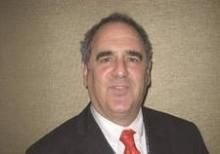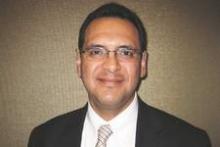SEATTLE – Certain clinical factors help predict which patients with knee meniscal tears and osteoarthritis will abandon physical therapy (PT) for surgery, according to a study reported at the World Congress on Osteoarthritis.
Investigators led by Dr. Jeffrey N. Katz performed a secondary analysis of the randomized, controlled MeTeOR (Meniscal Tear in Osteoarthritis Research) trial, which compared PT with arthroscopic partial meniscectomy among 351 patients.
Results showed that patients assigned to PT had a 6%-8% higher risk of crossing over to surgery if they had greater pain, a shorter symptom duration, or weaker hamstrings. But four-fifths of patients obtained pain relief from surgery, regardless of whether they were initially assigned to it or crossed over to it.
“Patients with the most painful and acute presentations and those with hamstring weakness were most likely to cross over from PT to arthroscopic partial meniscectomy in this trial,” commented Dr. Katz, who is a professor of rheumatology at Harvard Medical School and codirector of the Brigham Spine Center at Brigham and Women’s Hospital, Boston. However, “the risk ratios were very modest, suggesting we have limited capacity to predict crossovers.”
“From a research standpoint, crossovers compromise trial interpretation, so targeting patients most likely to cross over with efforts to try to retain them in their original treatment arm would enhance the value of trials,” he added. “From a clinical standpoint, there appears to be no disadvantage in delaying surgery until a trial of physical therapy has been undertaken, and that conclusion underscores the advice from many of these trials suggesting that PT be offered as first-line therapy for patients with degenerative meniscal tears.”
In an interview, Dr. Rolando Espinosa Morales, session comoderator and chief of the rheumatology service at the National Institute of Rehabilitation, Mexico City, said, “The study shows us there are no perfect predictors [of crossover] in these patients,” and careful evaluation is needed to discern which patients really need surgery and which will fare well with PT alone.
“It’s a hot topic right now in the world,” he commented. “We really don’t want to use surgery in all patients; we need to use it in a [restricted] number of patients.”
During a question and answer period, session attendee Ewa M. Roos, Ph.D., University of Southern Denmark in Odense, said, “You showed a lot of patient-related factors that could potentially explain crossover, but what is the role of the surgeon? … Is there a fact that if you can, you will cross over?”
“I agree with what I think is your implicit suggestion that there probably is a large role for the surgeon. We looked at heterogeneity in crossovers among surgeons in the trial, and there is some variability. There are probably cultural differences as well,” Dr. Katz replied. “I think … the question is, how fully are patients consented to not receiving surgery?”
Participants in MeTeOR were aged 45 years or older and had a meniscal tear on magnetic resonance imaging with degenerative cartilage changes and at least one meniscal symptom. They were randomized evenly to a standardized PT regimen emphasizing strength and range of motion, or to arthroscopic partial meniscectomy accompanied by standardized PT.
Overall, 27% of patients in the PT arm crossed over to surgery within about 5 months, Dr. Katz reported at the meeting sponsored by the Osteoarthritis Research Society International.
Multivariate analyses showed that patients initially assigned to PT were more likely to cross over to surgery if they had greater pain, scoring 40 or higher on the 100-point Western Ontario and McMaster Universities Osteoarthritis Index (WOMAC) pain scale (relative risk, 1.08); had experienced symptoms for less than a year (1.07); or had hamstring strength of less than 30 pounds (1.06).
However, the rate of treatment success, defined as an improvement of at least 10 points on the 100-point Knee Injury and Osteoarthritis Outcome Score (KOOS) at 6 months, was similarly high for the patients who were randomized to and received surgery (80%) and the patients who were randomized to PT but crossed over to surgery (81%).
The trial had several limitations, according to Dr. Katz. “From the standpoint of external validity, trial samples are not necessarily generalizable as we know. And with respect to internal validity, our comparison of immediate and delayed arthroscopic partial meniscectomy was post randomization, and the groups are not necessarily balanced,” he said.
Dr. Katz disclosed no relevant conflicts of interest.



